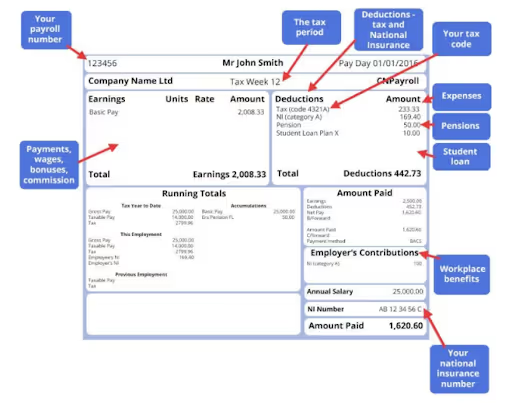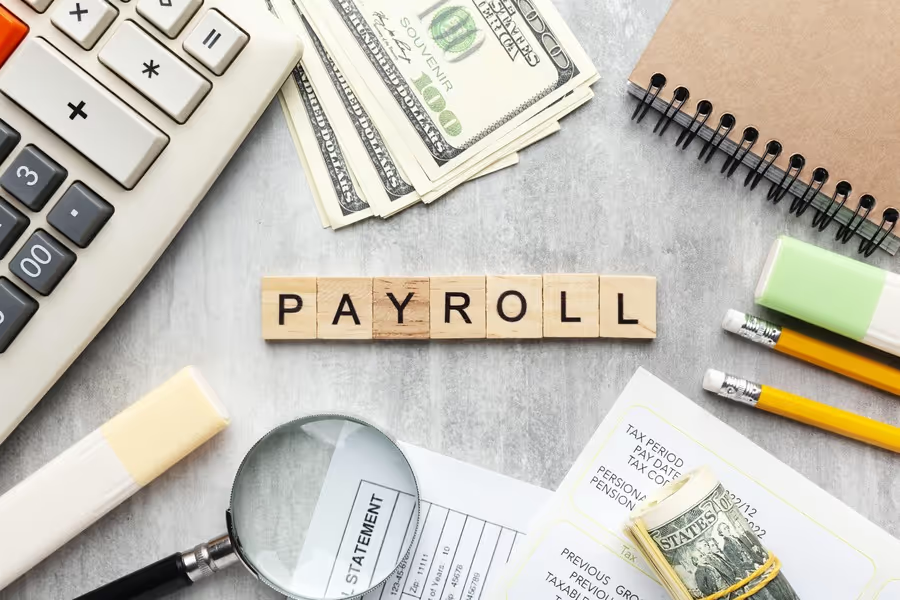Like most tax-paying Brits, at some point in your life you’ve likely filled in a tax form, signed up for a workplace benefit or received a payslip. And when you did one, or more, of these things you might well have spotted something called a payroll number (it’s usually nestled near your name or employee detail).
Despite being an important financial detail, a lot of people don’t know what a payroll number actually is, what it’s used for, and when/why you may need it.
So today we’ll explain what a payroll number is, why some employers use them, and, most importantly, where to find yours if you’re asked for it. And don’t stress, it’s all pretty simple once you understand.
{{payroll-guide}}
What is a payroll number?
A payroll number is a unique code that an employer assigns to each employee. It's like your staff ID for the payroll system, used to keep track of your salary, tax, and employment details.
It’s mostly used behind the scenes by your employer’s HR or payroll team to help manage things like pay runs, tax reporting, and staff records. Instead of relying only on names (which can get confusing if there are multiple Janes or Johns!), the payroll number makes sure everything is matched to the right person.
It’s worth noting that not every company uses payroll numbers, especially smaller businesses that don’t run large internal systems. But if your payslip or HR documents mention one, that’s what it’s for.
Why are payroll numbers important?
While a payroll number might seem like a small detail, it plays a useful role in keeping things organised, especially in larger businesses.
Here’s why it's important:
- Avoids mix-ups – It helps your employer tell you apart from colleagues with similar names.
- Speeds up admin – HR and payroll teams can process pay, tax and leave records more efficiently.
- Makes communication easier – If you ever contact your payroll department with a query, quoting your payroll number can help them find your records faster.
- Used in forms or portals – Some companies ask for your payroll number when you sign up for internal systems or staff benefits.
Overall, it’s a handy shortcut that helps everyone stay on top of things behind the scenes, without you needing to do a thing.
Where can you find your payroll number?
If you’ve been asked for your payroll number and aren’t sure where to look, don’t worry, it’s usually easy to find once you know where to check.
Here are the most common places to find your payroll number:
- Your payslip – This is the most likely place. Your payroll number is often listed near the top, alongside your name, employee number, or National Insurance number.
- Your employment contract or offer letter – Some employers include it in your initial paperwork.
- HR or payroll portal – If your company uses online systems for things like booking holiday or viewing payslips, your payroll number might be listed in your profile.
- Ask your HR team or manager – If you’ve checked and still can’t find it, a quick email or message to your HR or payroll contact should do the trick.
Look out for labels like “Payroll No.”, “Employee Number”, or even just “Ref” on your payslip, it can vary a bit depending on your employer. See the example below:

What if your employer doesn’t use payroll numbers?
If you’ve searched high and low and still can’t find a payroll number, there’s still no need to panic, not all employers use them.
Smaller businesses, in particular, might not need payroll numbers to manage their team, especially if they’re using simple payroll software or working with a small number of staff.
If you’re ever asked for a payroll number and you don’t have one:
- Double-check your payslip or HR documents in case it’s listed under a different label.
- Ask your employer or payroll contact - they’ll be able to confirm whether one exists or just let you know to leave that section blank.
Remember, payroll numbers are mostly for internal use. If your employer doesn’t use them, it won’t affect your pay, tax records, or anything else important.
{{ltd-guide}}
Are payroll numbers the same as employee numbers?
Not always - but they can be!
Some companies use the terms payroll number and employee number interchangeably, especially if they only assign one unique code per employee across all systems. In those cases, it’s essentially the same thing.
However, in larger organisations, the two numbers might serve slightly different purposes:
- An employee number might be used for general HR records, access systems, or internal directories.
- A payroll number is usually tied specifically to the payroll system and used for salary, tax, and pension records.
If you’re not sure which number you need to provide, check the context - or just ask your HR or payroll team. They’ll be able to tell you exactly what’s needed.
Need help with payroll? Crunch can help!
So, as we’ve explained, the concept of a payroll number is pretty simple, as is finding it should you be required to. However, as our lovely Head of HR here at Crunch will readily tell you 🙃 (shout out Helen!), there’s a lot more to payroll than just knowing all about your payroll number…
Whether you’re a freelancer sorting your own pay, a limited company director juggling payroll duties, or just trying to make sense of your payslip, we’re here to help.
At Crunch, we make payroll simple. Our expert team and easy-to-use software take the stress out of paying yourself (and your team, if you’ve got one). From handling tax and pensions to keeping you compliant with HMRC, we’ve got it covered.
Check out our payroll services or get in touch to chat with a friendly advisor today.

.svg)



.webp)














